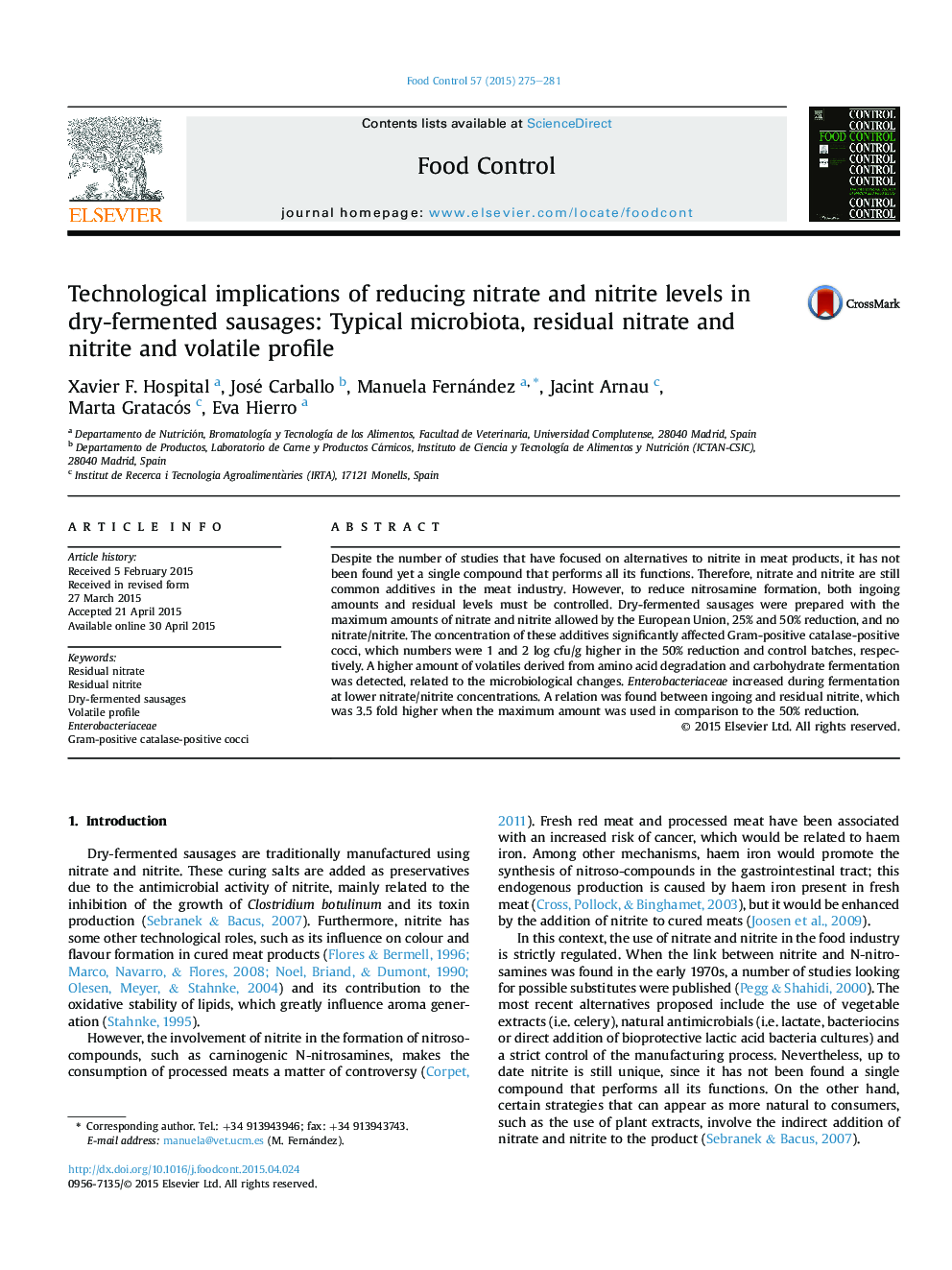| کد مقاله | کد نشریه | سال انتشار | مقاله انگلیسی | نسخه تمام متن |
|---|---|---|---|---|
| 6390730 | 1628405 | 2015 | 7 صفحه PDF | دانلود رایگان |
- The residual nitrite levels were related to the ingoing amounts in the formula.
- GCC+ and Enterobacteriaceae increased at lower NO2/NO3 ingoing amounts.
- Volatiles from amino acids and carbohydrates increased at lower NO2/NO3 input.
Despite the number of studies that have focused on alternatives to nitrite in meat products, it has not been found yet a single compound that performs all its functions. Therefore, nitrate and nitrite are still common additives in the meat industry. However, to reduce nitrosamine formation, both ingoing amounts and residual levels must be controlled. Dry-fermented sausages were prepared with the maximum amounts of nitrate and nitrite allowed by the European Union, 25% and 50% reduction, and no nitrate/nitrite. The concentration of these additives significantly affected Gram-positive catalase-positive cocci, which numbers were 1 and 2 log cfu/g higher in the 50% reduction and control batches, respectively. A higher amount of volatiles derived from amino acid degradation and carbohydrate fermentation was detected, related to the microbiological changes. Enterobacteriaceae increased during fermentation at lower nitrate/nitrite concentrations. A relation was found between ingoing and residual nitrite, which was 3.5 fold higher when the maximum amount was used in comparison to the 50% reduction.
Journal: Food Control - Volume 57, November 2015, Pages 275-281
